Oritori Ishigaki City Official Tourism Information Site
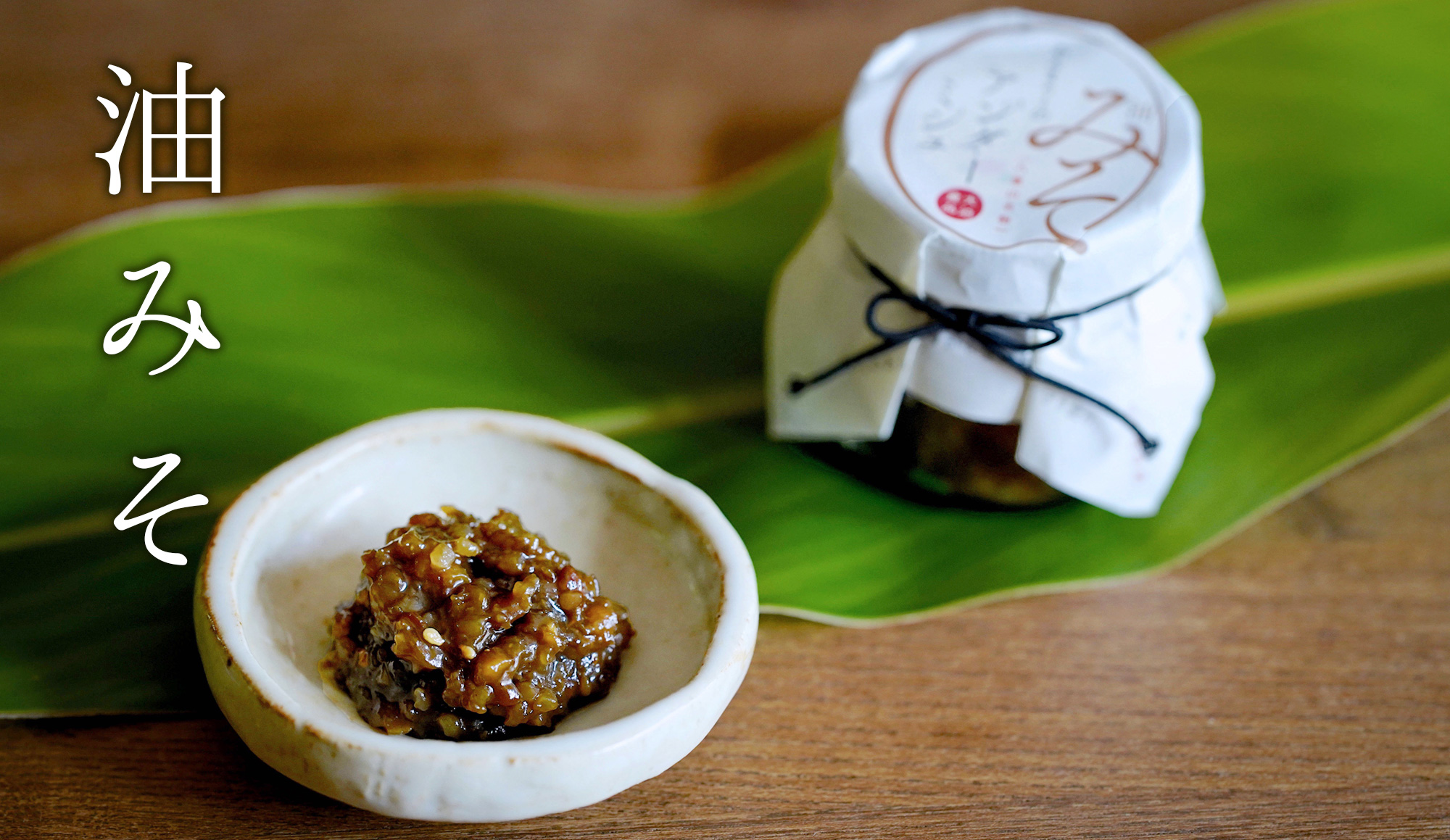
Abura miso (oil miso) is an indispensable rice accompaniment on the Ishigaki Island dining table. It is also called anransu, andansu, andamisu, or andamishu, and is eaten on top of rice or tofu, used as a filling for rice balls, or used as a seasoning for stir-fries.
Yaeyama's traditional miso is rice miso, made from rice, soybeans, and salt. Abura miso is also made by mixing pork and its oil with this rice miso as a base.
Originally, "abura miso" was a preserved food made in each household. In the past, with the aim of not wasting precious ingredients, people would cook the scraps of meat and fat left over after butchering pork and mix them with miso.

"It's the wisdom of the people of the past. Miso can be preserved for a long time, and meat, which was once a precious commodity, can now be eaten without any leftovers or waste. Since ancient times, 'abura miso' made at home has always had its own unique flavor," says Miyara Reiko of Odomari Foods, which has a small factory in Shiraho village on Ishigaki Island.
Reiko has been helping her parents make "abura miso" since she was a child.
"I inherited my mother's cooking skills through listening, seeing, touching, and working together. Even now, I sometimes find myself thinking, 'Oh, that's how my mother did it, and how her hands worked.'" (Reiko)
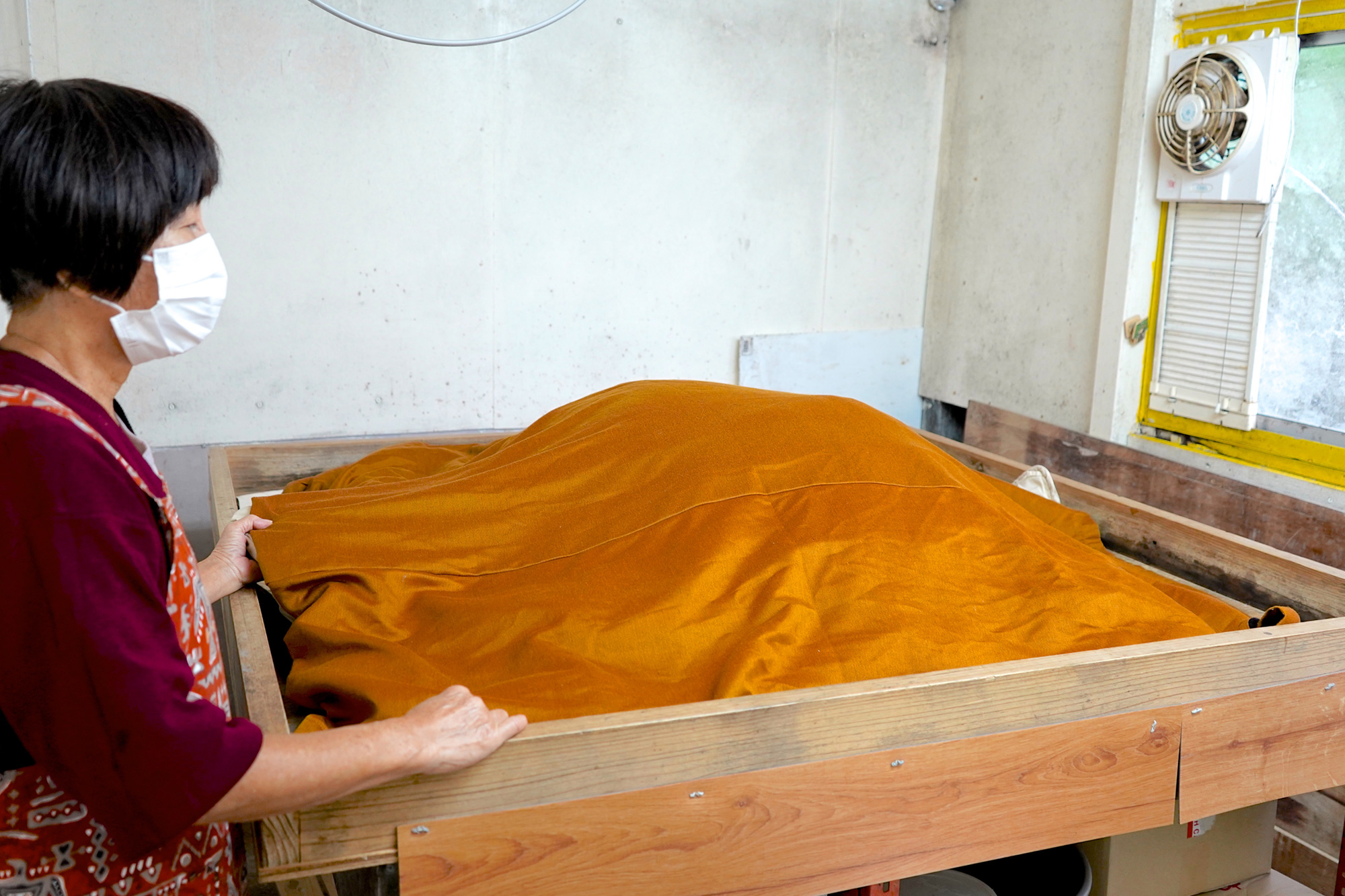
Mix the steamed rice with koji mold and let it sit overnight while controlling the temperature.
The rice is then spread out on a table, ridges are made to allow the koji mold to take root firmly in the rice, and the rice is left to rest for about a day.
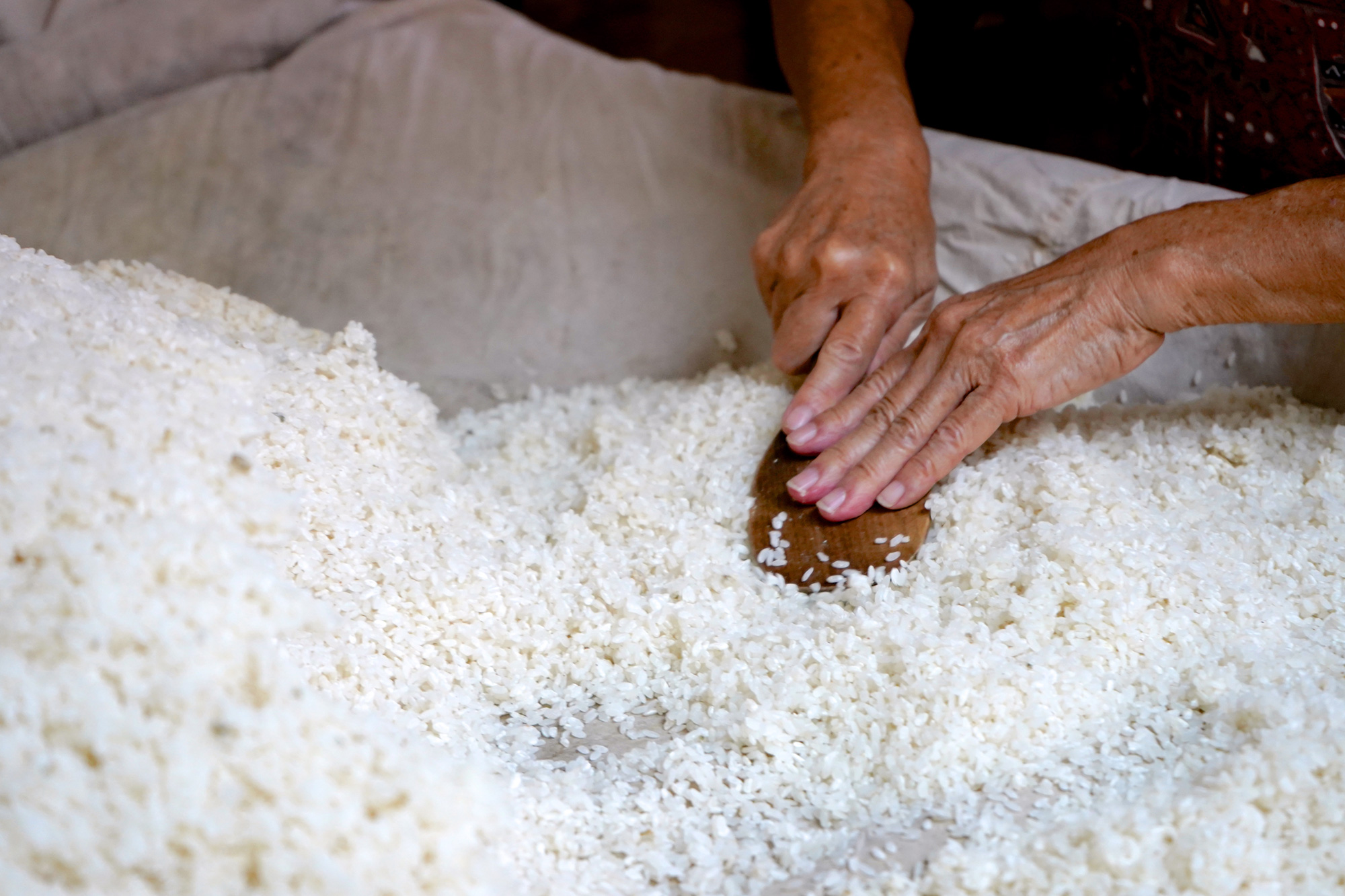
The key to making smooth, delicious miso is to loosen the rice evenly at this stage so that there are no clumps. After that, salt is mixed into the rice to prevent it from becoming salty. (Odomari Foods uses salt from Ishigaki Island.)
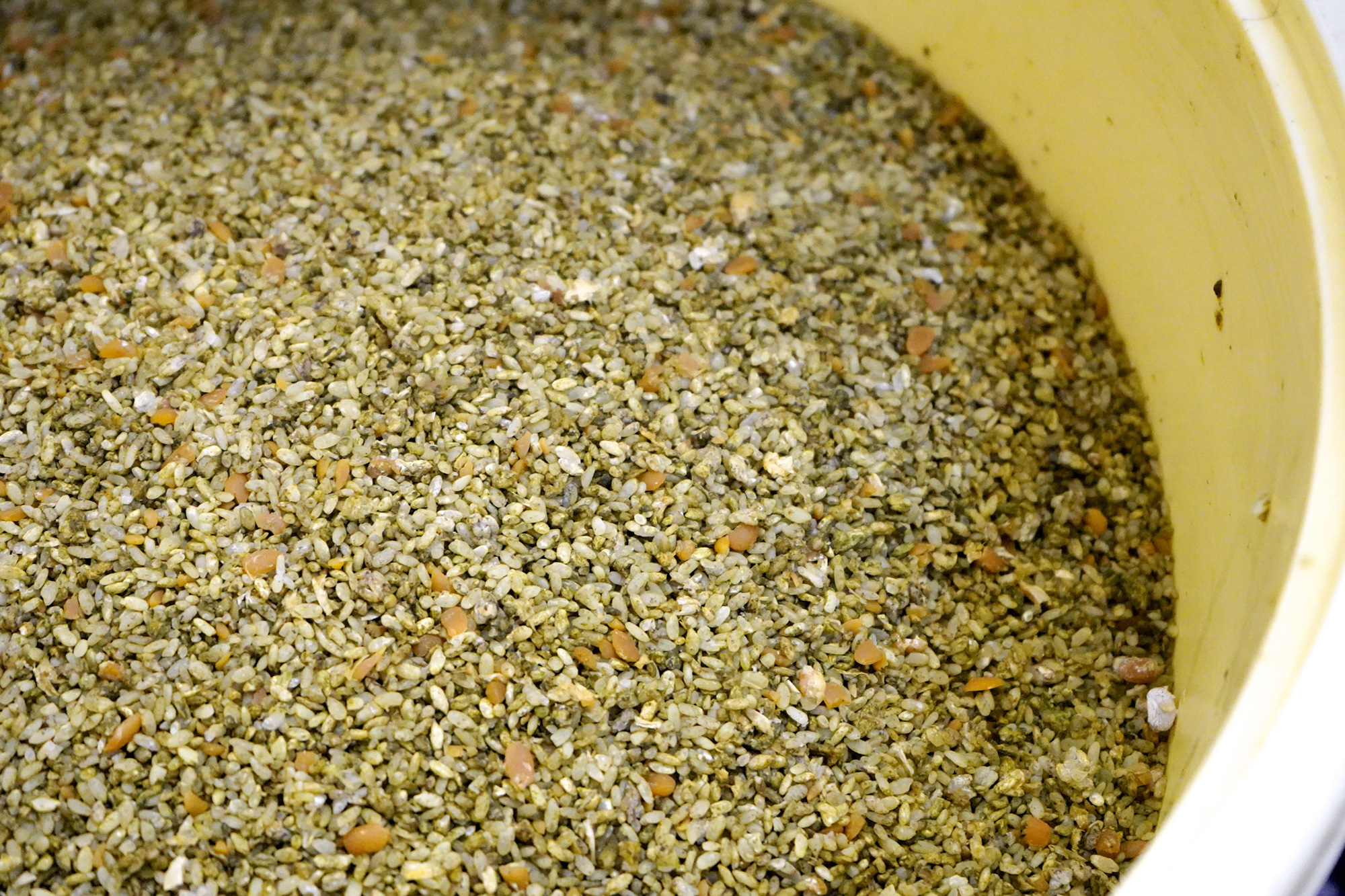
Miso is made by combining minced boiled soybeans with rice and putting them into a barrel to mature.
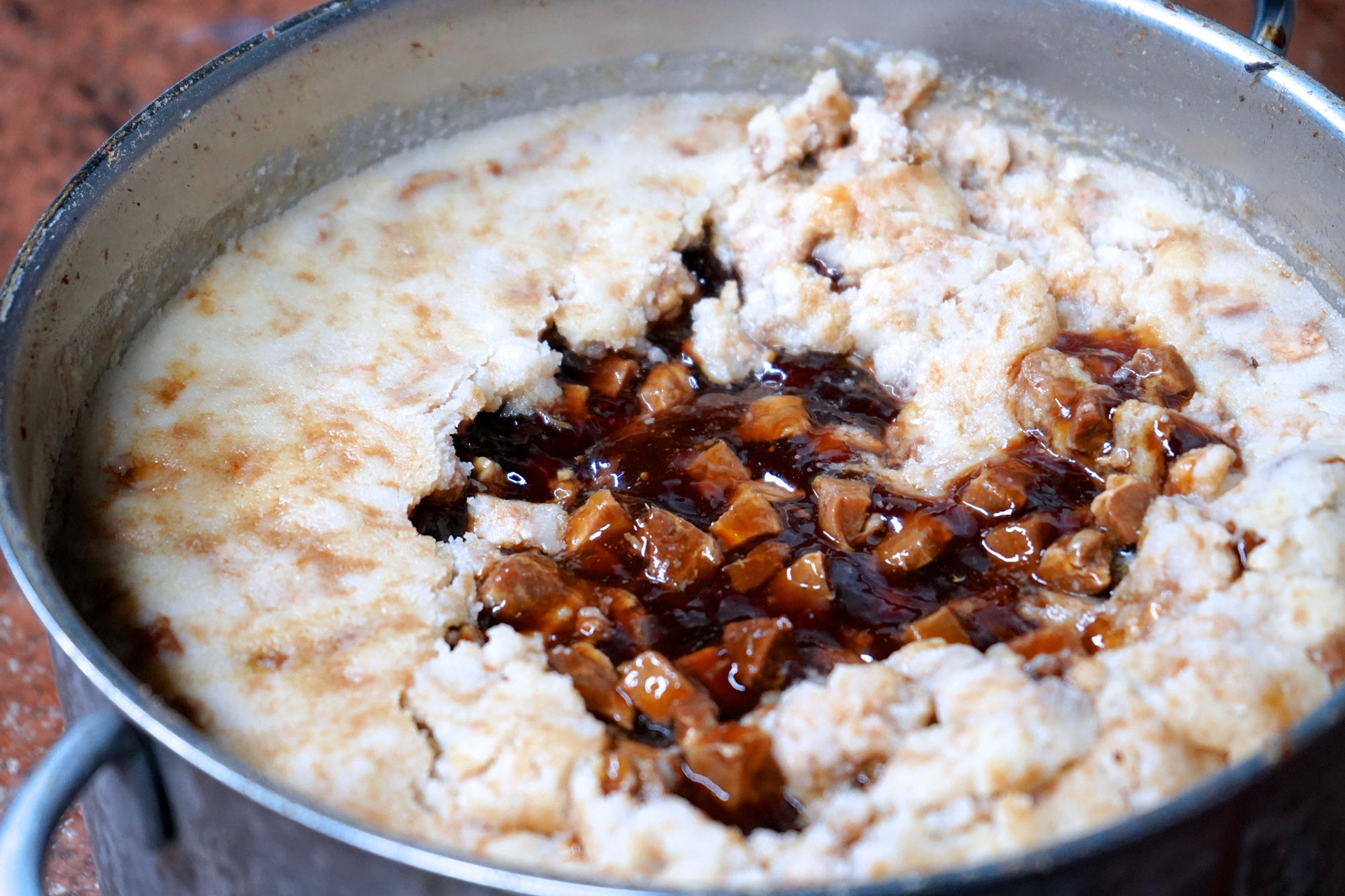
The pork is diced into small pieces and seasoned. The white chunks are pork fat.
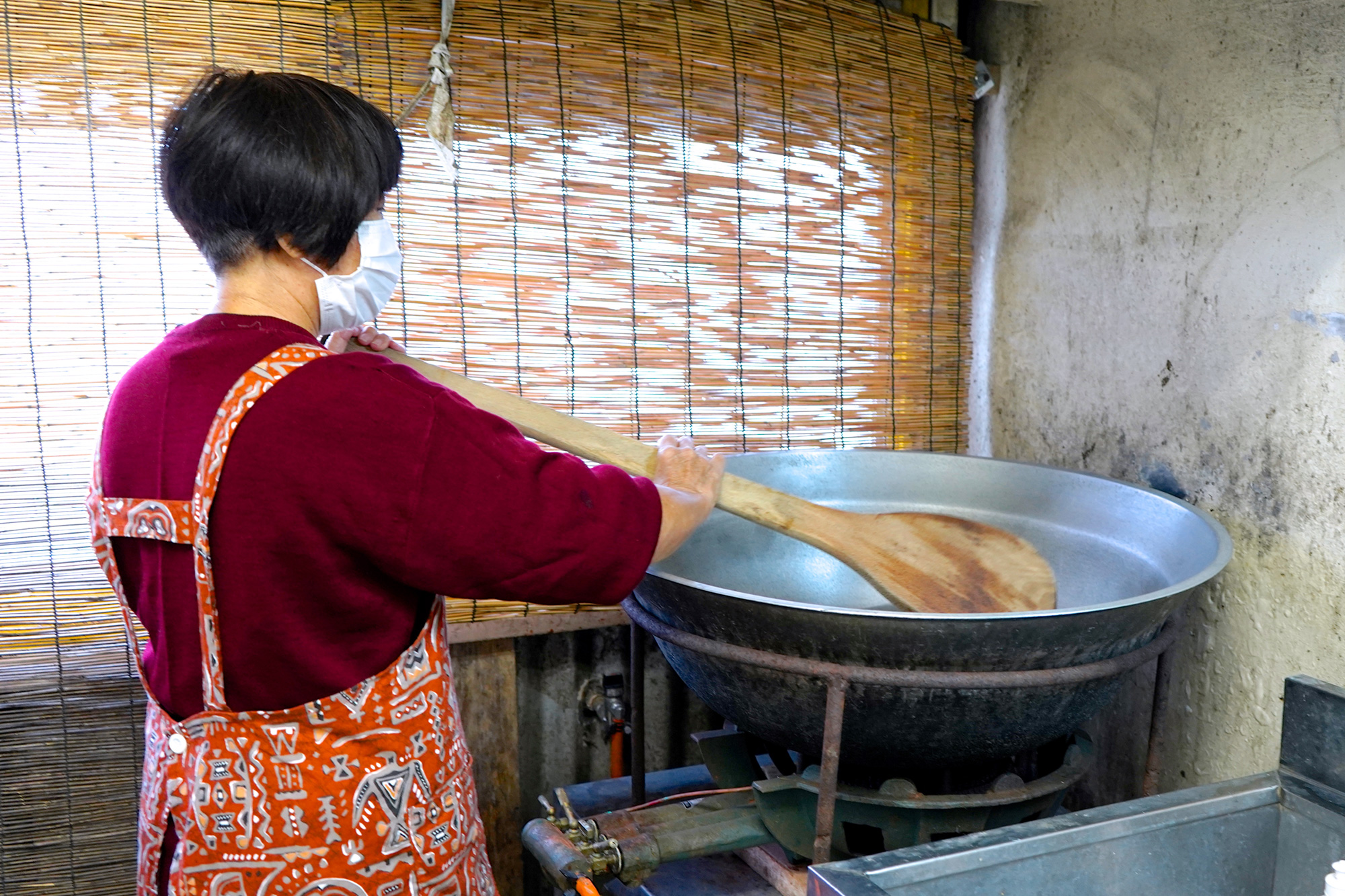
Using this pot, pork, fat, and other ingredients, along with seasonings, are mixed with miso and simmered to create "abura miso."
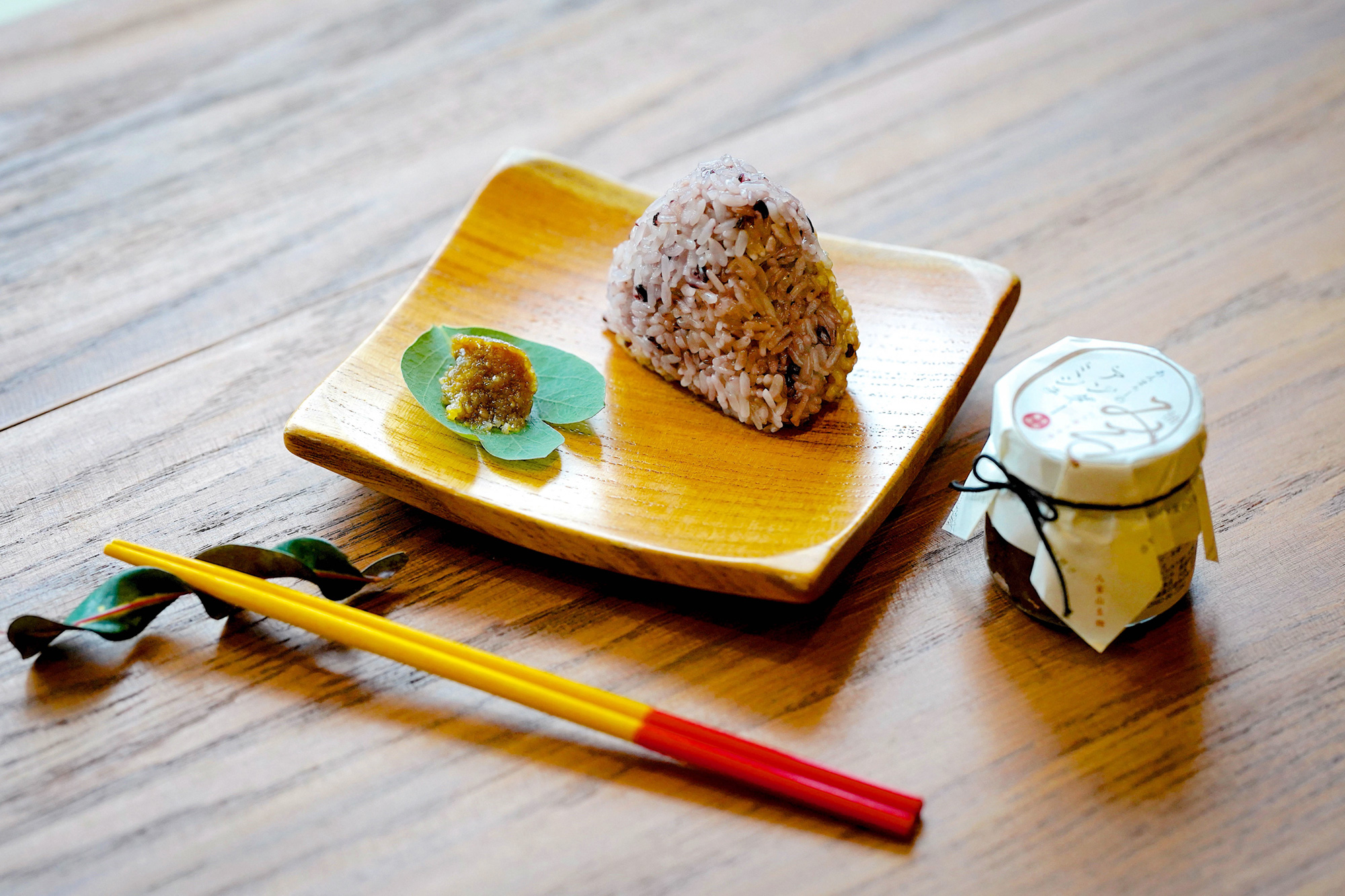
There are many types of "abura miso," from the simple, traditional type to those made with a variety of ingredients such as ginger, island chili peppers, peppercorns, longevity grass and pineapple, and Ishigaki Island moromi pork.
"I would like to develop new products that combine island ingredients with rice miso. My mother has also made Andamishu by combining island ingredients such as 'shimakusu (island chili peppers)', 'choumeisou and pineapple', 'chlorella and honey', and 'fish (bonito)' with miso. In the future, I would like to use five-grain rice miso as well."
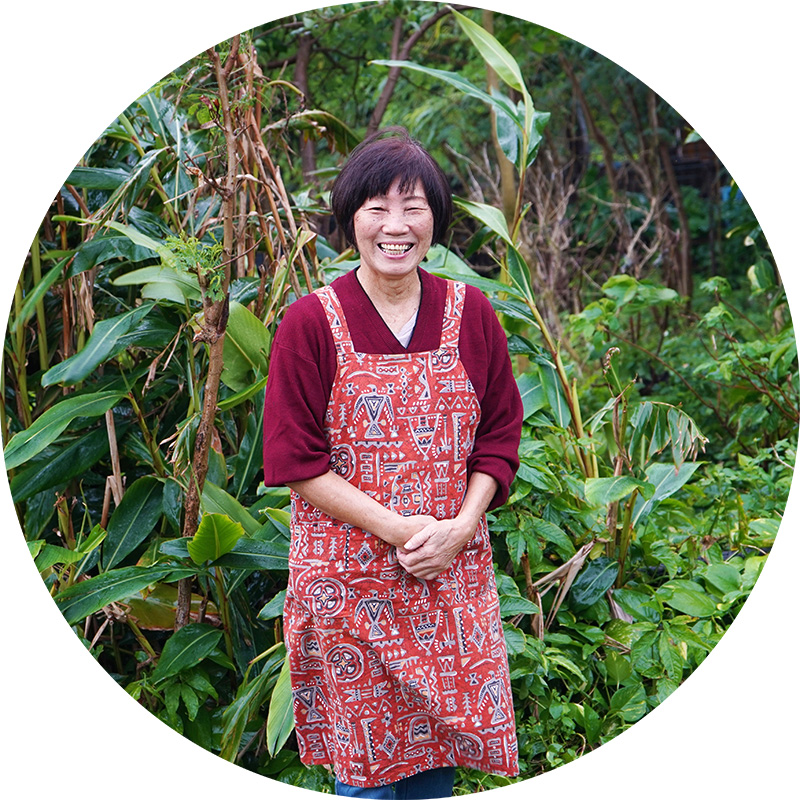
profile
Reiko Miyara
Born in Ishigaki Island in 1948 and raised on the island.
From a young age, he helped make rice cakes (at the former Odomari Mochiya). He moved to Naha to attend high school and university.
She returned to her hometown and worked as a teacher, while raising five children and helping out at her family's rice cake shop.
After his father passed away, he began producing and selling the local delicacy "Anma Andamish" with his mother under the name "Otomari Foods" to this day.